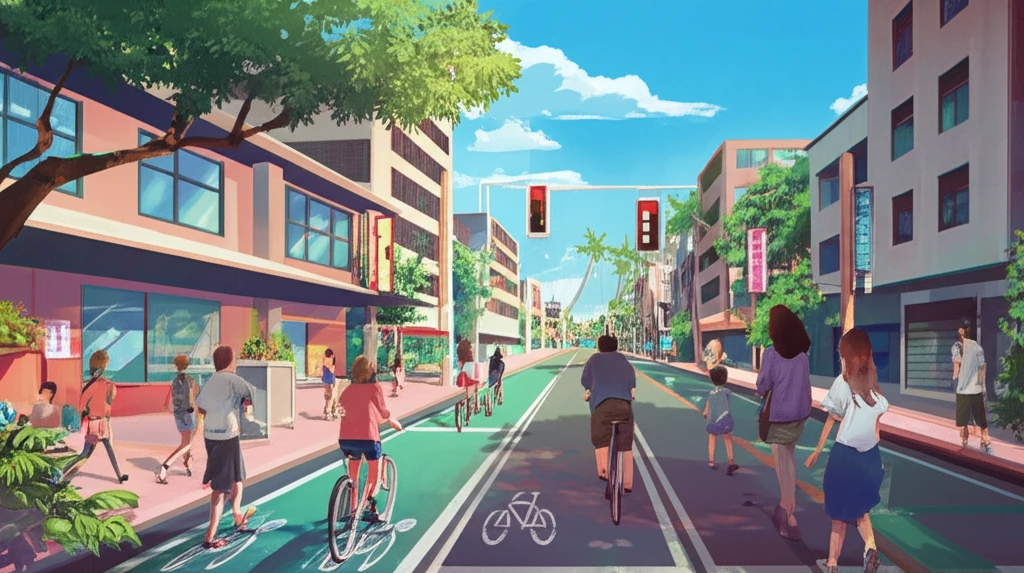
Walk This Way: How Hawaii's Streets Can Inspire Your Active Lifestyle
"Discover how urban design in Hawaii impacts pedestrian and bicycle use, and learn what you can do to promote healthier, more active communities."
Walking and bicycling are fantastic ways to get around, offering significant health benefits. However, the design of our streets and roads plays a crucial role in determining how much we choose these active transportation methods. Think about it: a street with wide sidewalks, bike lanes, and safe crossings is far more inviting than a busy road with narrow shoulders and speeding traffic. Numerous national initiatives are working to improve pedestrian and bicycling infrastructure, but how do we know where to focus our efforts?
Imagine a world where every street is a safe and enjoyable place to walk or bike. Unfortunately, many areas still have a long way to go. That's why a comprehensive assessment of street conditions is essential. To understand the challenges and opportunities for creating more pedestrian- and bicycle-friendly communities, a detailed study was undertaken to assess the accessibility and friendliness of Hawaii's roads for these two activities. This research offers valuable insights that can inform urban planning and promote healthier, more active lifestyles.
The Aloha State, with its beautiful landscapes and vibrant communities, provides a unique setting to evaluate how street design impacts active transportation. The study sheds light on the specific factors that encourage or discourage walking and bicycling, offering lessons that can be applied far beyond the islands.
Key Findings: What Makes a Street Walkable and Bikeable?

The Hawaii study, which objectively assessed hundreds of street segments across the islands, revealed some interesting patterns. High-capacity streets (those designed for more vehicular traffic) generally had better pedestrian infrastructure, such as sidewalks and crossing signals. However, low-capacity roads often lacked these basic amenities. Bicycle facilities were limited across the board, highlighting a significant area for improvement.
- Sidewalks: Contiguous sidewalks in good condition are essential for safe and comfortable walking.
- Crossing Aids: Crosswalks and pedestrian signals make it easier and safer to cross busy streets.
- Mixed Land Use: A variety of land uses within a neighborhood promotes walking and biking for errands and recreation.
- Bicycle Facilities: Dedicated bike lanes and routes encourage cycling for transportation and leisure.
Creating Change: What Can You Do?
The Hawaii study offers a valuable snapshot of the challenges and opportunities for promoting active transportation. While the specific findings are relevant to Hawaii, the broader lessons apply to communities everywhere. By advocating for Complete Streets policies, supporting mixed-use development, and prioritizing pedestrian and bicycle infrastructure, we can create healthier, more vibrant communities where active living is the norm, not the exception. Let's work together to build a future where everyone can safely and easily walk or bike to their destinations, enjoying the many benefits of an active lifestyle.
